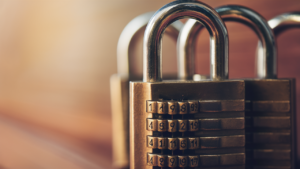A photo scanner works by shining light at an image, document, or object, and then directing the reflected light onto a photosensitive technology. This light is converted into electronic data, which is used to create a digital copy of the original.
Scanners use mirrors and lenses to capture the content of the document or image and transfer it into a digital format. By utilizing a light source and a photosensitive sensor, scanners are able to accurately reproduce the details and colors of the original photo.
This process allows users to digitize and preserve their cherished old photos, ensuring their longevity and accessibility in the digital age.
Introduction To Photo Scanning
Photo scanners utilize light to capture and convert images into digital data. The scanner shines light on the photo, which is then transformed into electronic information through mirrors and lenses. This process creates a digital replica of the original photo.
| Photo scanner vs. camera photo |
| Comparing scanner photo quality to camera photo quality reveals differences. Scanners excel in document and photo reproduction, offering superior image quality. While cameras capture beautiful portraits and scenery, they fall short with documents. Scanner photos have significantly smaller file sizes compared to camera photos. |
The process of using a photo scanner involves fitting multiple photos onto the scanner bed with a slight gap in between. Ensuring proper alignment, closing the lid, initiating the scan, and reviewing the resulting image are essential steps. If satisfied, proceed by scanning additional sets of photos following the same protocol for optimal results.
The Inner Workings Of A Photo Scanner
The inner workings of a photo scanner involve the use of light and photosensitive technology to convert analog images into digital format. When a photo is scanned, the scanner shines light onto the image, and the reflected light is directed onto photosensitive technology through mirrors and lenses. This process captures the image and converts it into a digital file. The conversion process involves translating the analog information into digital data, which can be stored and manipulated electronically. This allows for the preservation and sharing of old photographs in a modern, digital format.
When it comes to scanning a photo, it’s essential to ensure that the scanner’s settings are optimized for resolution and color accuracy to achieve the best results. Additionally, the scanning process may involve arranging and aligning multiple photos on the scanner bed to efficiently digitize a collection of images. Once the scanning is complete, the digital files can be stored, edited, and shared using various digital platforms and devices.
Types Of Photo Scanners
Photo scanners work by using light to capture an image, document, or object and then converting it into electronic data. There are different types of photo scanners, including flatbed scanners, sheet-fed scanners, and handheld scanners, each with its own advantages and uses.
These scanners are designed to digitize old photos and documents, preserving cherished memories for the future.
| Flatbed Scanners |
| Flatbed scanners use a flat, glass surface to scan documents and photos. The item being scanned is placed face down on the glass, and the cover is closed. The scanner then captures the image by moving a bright light across the item and recording the reflected light. |
| Auto Feed Scanners |
| Auto feed scanners are designed to process multiple pages or photos automatically. They can quickly scan a stack of photos, making them a convenient option for digitizing large collections. These scanners typically have a feeder tray where you can load the photos or documents for automatic scanning. |
| Professional Scanning Services |
| For those who prefer not to handle the scanning process themselves, professional scanning services offer a convenient solution. These services use high-quality scanners and advanced techniques to digitize photos and documents, often providing options for image enhancement and restoration. |
Key Features Of Photo Scanners
Photo scanners work by using light to capture an image, which is then converted into electronic data to create a digital copy. The scanner shines light on the photo and captures the reflected light, which is then converted into a digital format.
This process preserves the quality of the original photo and allows for easy digital storage and sharing.
| Key Features of Photo Scanners |
| Resolution and quality |
| Color accuracy |
| Ease of use |
Photo scanners operate by illuminating the image, reflecting light onto photosensitive technology. This light is then transformed into electronic data through mirrors and lenses. The resulting data forms a digital image, offering superior quality compared to camera photos. When scanning photos, ensure proper alignment and spacing for optimal results. For old photo digitization, select scanners with high resolution and color accuracy. Additionally, prioritize scanners with user-friendly interfaces for ease of operation.

Preparing Photos For Scanning
Cleaning the scanner bed: Before scanning, ensure the scanner bed is clean to avoid dust or smudges on the photos.
Aligning and placing photos: Properly align the photos on the scanner bed to ensure they are straight and evenly spaced.
Choosing the right settings: Select the appropriate settings on the scanner for color, resolution, and file type to achieve the desired scan quality.
The Scanning Process
A photo scanner is a device that creates digital copies of printed photos. The scanning process involves several steps, including previewing and adjusting, naming and organizing files.
Before scanning, it is important to take the photos out of albums and scan the backs of photos if they have any information to preserve. Naming convention is also important to keep the files organized, especially if there are a large number of photos to be scanned.
During the scanning process, the scanner reads the photo and creates a digital copy by converting the image into electronic data. After scanning, previewing and adjusting the digital copy is necessary to ensure that the image is clear and the colors are accurate. The final step is to upload the scanned photos to a digital platform, such as Google Photos.
While there are drawbacks to using a photo scanner, such as scanning issues and learning curve, it is still the best option to digitize old photos. Alternatively, phone apps and flatbed photo scanners can also be used, but they may not have the same quality as a dedicated photo scanner.
After The Scan: Enhancing Your Digital Photos
If you’re interested in learning about how a photo scanner works, there are a few things you should know. The scanning process involves shining light onto the photo and capturing the reflected light with a sensor. The scanner then converts this information into digital data that can be saved on your computer.
Once your photos are scanned, you may want to consider editing them to enhance their quality. You can do this using software programs like Adobe Photoshop or Lightroom.
It’s also important to think about how you’ll store and share your digital photos. Many people choose to upload them to cloud storage services like Google Photos or Dropbox. This allows you to access your photos from anywhere and share them with others.
Overall, scanning your old photos can be a great way to preserve your memories and make them easily accessible in the digital age.
Choosing The Right Scanner For Your Needs
When choosing the right scanner for your needs, there are several factors to consider. The top scanner options for old photos include auto feed scanners, phone apps, flatbed photo scanners, and professional scanning services. Each option has its pros and cons, so it’s essential to assess your specific requirements before making a decision.
Frequently Asked Questions
How Does An Image Scanner Work?
An image scanner works by shining light on an object, capturing the reflected light, and converting it into electronic data to create a digital copy.
Is It Better To Scan A Photo Or Take A Picture Of It?
In general, it is better to scan a photo than to take a picture of it. The scanner’s image quality is superior and the file size of the scanned photo is usually smaller than that of a camera photo. While cameras are great for capturing portraits and scenery, documents and photos are better scanned.
It is recommended to use a photo scanner to digitize old photos.
How Do You Use A Photo Scanner?
To use a photo scanner, follow these steps: 1. Place as many photos as possible on the scanner, leaving a small space between each. 2. Align the edges of the pictures. 3. Close the scanner lid and start the scan.
4. Check the resulting image to ensure it looks good. 5. If satisfied, place a new set of photos on the scanner and continue scanning.
What Is The Best Scanner To Scan Old Photos?
The best scanner for scanning old photos is a flatbed photo scanner. It works by using a light source and a photosensitive sensor to capture the content of the photo. You simply place the photo on the scanning bed, close the lid, and start the scan.
It provides superior image quality compared to taking a picture with a camera.
Conclusion
To sum it up, a photo scanner works by shining light onto an image, document, or object. The reflected light is then directed onto a photosensitive sensor through mirrors and lenses. This sensor converts the light into electronic data, creating a digital copy of the original.
Scanners offer superior image quality compared to taking a photo with a camera, making them ideal for preserving old photos. By following simple steps like aligning the pictures and checking the resulting image, you can quickly and easily digitize your cherished memories.








